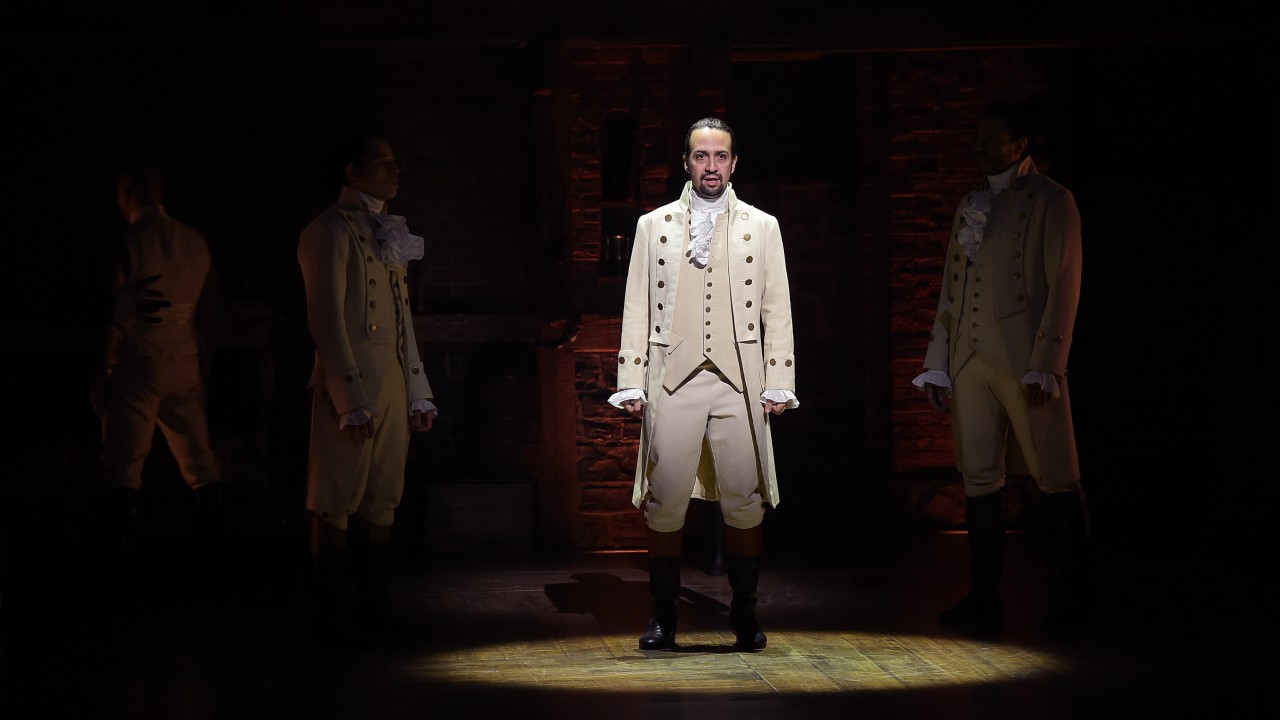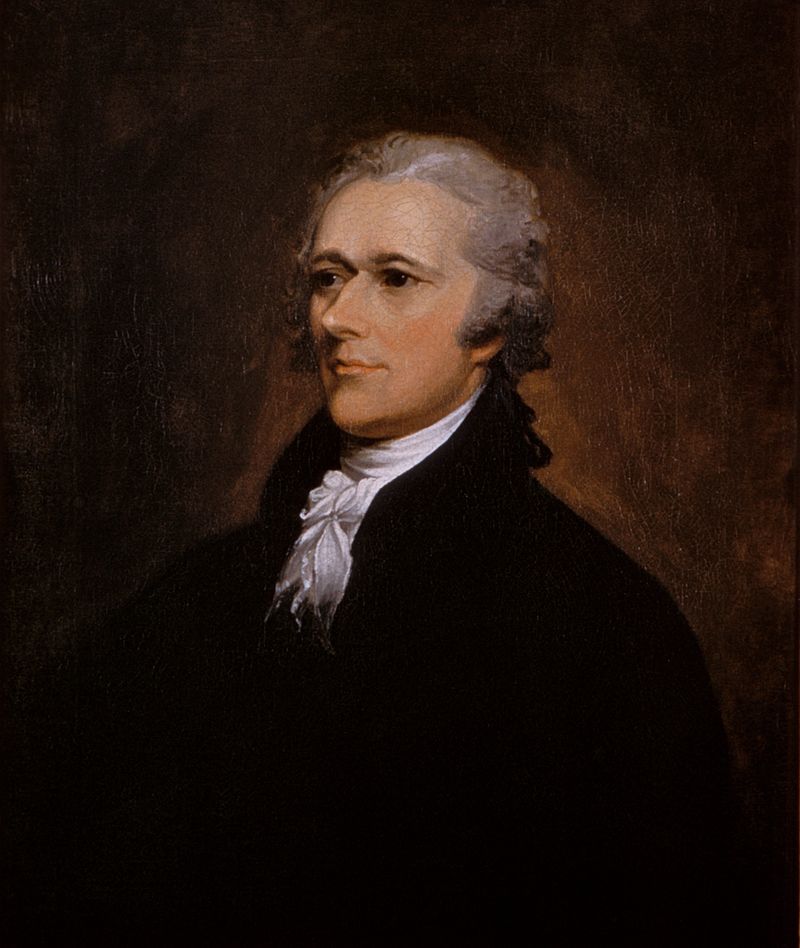
Hamilton actor and composer Lin-Manuel Miranda performs on stage during the 58th GRAMMY Awards at Richard Rodgers Theater on February 15, 2016 in New York City. (Photo by Theo Wargo/Getty Images)
This post originally appeared at The Brennan Center for Justice.
Alexander Hamilton, that visionary Founding Father and hip-hop phenomenon, thanks to Hamilton, the musical, has been celebrated of late on Broadway and at the Grammys. His face adorns the $10 bill. If only his thoughts about choosing Supreme Court justices were getting remotely as much respect from Senate Majority Leader Mitch McConnell, Judiciary Committee Chairman Charles Grassley and most other GOP senators.
We can discern from Hamilton’s owns words what he probably would have thought of Senate Republicans’ vow not to consider any Supreme Court nomination President Obama puts forward for Justice Antonin Scalia’s successor. The best guess, based on the historical evidence, is that Hamilton and other of the Constitution’s Framers would have been appalled by the confirmation antics of McConnell & Co.
Let’s turn, specifically, to two of Hamilton’s contributions to the Federalist Papers, the famed series of articles and essays he wrote with James Madison and John Jay, urging ratification of the new Constitution. The documents appeared in New York newspapers during 1787 and 1788 under the shared pseudonym Publius.

Portrait of Alexander Hamilton. (Library of Congress via Wikimedia Commons)
In Essays 76 and 77, Hamilton provided a description and rationale for the Constitution’s prescribed method of selecting Supreme Court justices, and, more broadly, the checks and balances struck between the executive and legislative branches in the matter — a time-honored balance for which Republicans, through their outburst over President Obama’s undiminished power of appointment during his final year in office, show profound disrespect.
After considerable discussion and debate at the 1787 constitutional convention in Philadelphia, the delegates landed on the selection process that endures today, vesting the power to choose justices for the nation’s highest court (and other judges and high officials) in the president, subject to the “advice and consent” of the Senate.
Hamilton makes a forceful case that it was the right decision, arguing that the president — not the legislature — is best suited to selecting justices and other important federal officers and for lifting both the choices and the process from the usual political muck.
“[O]ne man of discernment is better fitted to analyze and estimate the peculiar qualities adapted to particular offices,” Hamilton wrote. In contrast, he said, a legislative body tasked with making the appointments would lead to “a full display of all the private and party likings and dislikes, partialities and antipathies, attachments and animosities, which are felt by those who comprise the assembly.”
During the drafting of the Constitution, the Framers rejected schemes that would have given the appointment power to the Senate or a committee comprised of the president and senators, preferring to leave the president the “responsible person” subject to “restraint” by the Senate. They worried, as James Madison described in his notes on the convention debates, that “[a]ppointments by the Legislatures have generally resulted from cabal, from personal regard, or some other consideration than a title derived from proper qualifications.”
Hamilton expressed his understanding, shared by fellow Framers, that the Senate’s “advice and consent” power, contained in the document’s Article II, Section 2, was meant to provide a check on unfit or unqualified presidential appointees. While he did not envision that the Senate would serve merely as a White House rubber stamp, or totally eschew political tugs, he assumed the chamber would consider nominees on their merits. And that has been the practice over the course of American history, even amid the harsh partisanship of recent decades.
As Hamilton describes it, the Constitution, quite rightly, assigns the Senate an important but limited role — namely, to incentivize the president to propose good candidates. “The possibility of rejection would be strong motive to care in proposing,” he explained. The Senate’s confirmation role, Hamilton elaborated, was meant to prevent “the appointment of unfit characters from State prejudice, from family connection from personal attachment, or from a view to popularity.”
Again, Hamilton assumed the Senate would fulfill its responsibility and actually consider the president’s choice. Or, as he described it, the Constitution called for the president “submit[ting] the propriety of his choice to the discussion and determination of a different and independent body” — the Senate — and “[t]he person ultimately appointed” being “the object of [the president’s] preference, though perhaps not in the first degree.”
Other ratification-era documents echo this perspective on the assigned roles of the president and Senate. In the North Carolina Ratifying Convention debate, for example, a leading Federalist and future Supreme Court justice, James Iredell, noted “[t]he Senate has no other influence but a restraint on improper appointments. The President proposes such a man for such an office” and “[t]he Senate has to consider upon it. If they think him improper, the President must nominate another, whose appointment ultimately again depends upon the Senate.”
Notice, nothing there, or in Hamilton’s Federalist Papers essays, or anywhere, for that matter, remotely grants permission some 228 years after the Constitution’s ratification for the Senate’s dominant party to deny any consideration, sight-unseen — no hearing, no vote, no nothing — to a duly elected president’s Supreme Court nomination.
Members of Congress, remember, including all members of the Senate, take a constitutionally-mandated oath to “support” the Constitution. Some way to show support. The idea that a reigning Senate majority would flout the Constitution’s design by declining to perform their assigned “advice and consent” role regarding a president’s choice for the Supreme Court — no matter his or her credentials or reasonable moderation — was not contemplated by Hamilton or others who had a major hand in shaping the nation’s charter.
Majority Leader McConnell and other GOP senators contend their blockading is designed to “let the people decide” through their vote in the coming presidential election, eight months down the road. Of course, that ignores that Americans have already spoken, loudly, by electing President Obama — twice. And, as many have noted, the section of the Constitution directing that presidents nominate people to fill vacant Supreme Court seats contains no exception for those with only months to go in office.
Thus, true to the Constitution’s design, the historical record shows 14 presidents have appointed 21 justices during presidential election years, according to aWashington Post tally. A total of six presidents filled Supreme Court seats in the lame duck period following the election of their successors — going all the way back to John Adams’s appointment of our fourth chief justice, John Marshall, following Adams’ loss in the bitter 1800 election to Thomas Jefferson. Today’s anticipatory obstructionism, to the point of calling on President Obama to refrain from submitting a nomination, is a huge, and hugely inappropriate, break.
In fact, far from supporting a popular referendum for filling vacant Supreme Court seats, the Constitution’s drafters aimed to insulate judicial selection from the passing winds of popular political opinion. To put them above ordinary politics, justices were given lifetime appointments, and spared from running for election. At the time of ratification, by the way, neither the president (selected by the Electoral College) nor the Senate (then selected by state legislatures) was directly elected by the people. The only directly elected body, the House of Representatives, was completely excluded from the appointment process. However, by arranging it so nominations to the courts and to top executive jobs require the Senate’s signing off, the Constitution practically ensures that a president’s “unfit” choices will trigger some measure of public scrutiny and discussion.
To be sure, much has changed since the Founding era. But the Founders’ basic belief in an American government carefully designed to actually work remains a bulwark of the nation’s democracy. In Alexander Hamilton’s words, “the true test of a good government is its aptitude and tendency to produce a good administration.” Keeping a Supreme Court seat vacant for a needlessly extended period, as Republican leaders favor, would do the exact opposite, provoking 4-4 ties and damaging legal uncertainty while badly undermining the Constitution.
Our constitutional system only works if the institutional players adhere in good faith to the Constitution’s basic rules. Our strong hunch is Hamilton and other Framers, were they alive today, would not hesitate to call out Republican leaders for their pre-announced departure.





